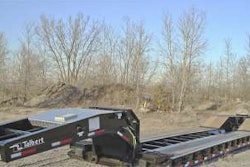The new Low-Emission Vehicle (LEV III) regulations officially adopted by the California Air Resources Board last week will establish the world’s most stringent tailpipe and greenhouse gas emissions standards for new passenger vehicles.
These new standards can be achieved with the help of new clean diesel engines, which are 20 to 40 percent more fuel-efficient than comparable gasoline engines, and new ultra-low-sulfur-diesel fuel, which has reduced sulfur emissions by 97 percent, according to Allen Schaeffer, the executive director of the Diesel Technology Forum.
“This action by the California Air Resources Board officially finalizing the third-generation Low Emission Vehicle rules sets forward an aggressive plan to usher in a new generation of highly fuel-efficient, less petroleum-dependent cars and light trucks in California,” Schaeffer said. “We can now say with confidence that clean diesel cars will be part of the LEV III plan, thanks to the incredible progress and innovation in diesel engines and new advancements in emissions control technology. With the adoption of this rule, the Air Resources Board recognizes the inherent energy efficiency and lower GHG emissions benefits of the new generation of clean diesel technology.”
With LEV III, California’s new light-duty vehicle tailpipe emissions regulations are to be phased in during model years 2017-2025. In that time, all vehicles sold in California will have to meet Super Ultra Low Emission Vehicle (SULEV) tailpipe standards.
“The ARB played a significant role in driving the tremendous transformation to very low emissions that defines the diesel automobile of today,” Schaeffer said. “These new clean diesels will now help in meeting California’s near-term and long-term environmental, energy and climate goals. The fact that diesel technology is both proven and widely available today is also critical to making early progress toward California’s greenhouse gas reduction goals. Some of the other more exotic fuels and vehicle technologies, while promising, remain in the very earliest stage of development or at minimal market penetration levels.










